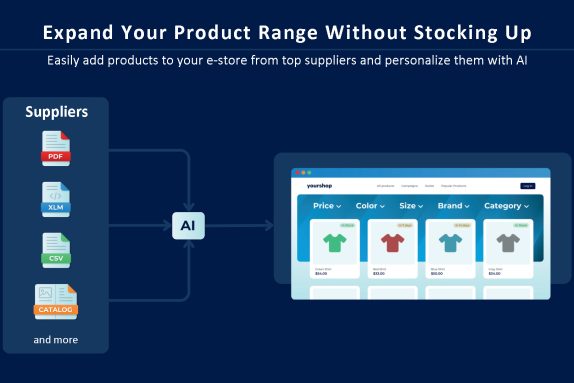Digital accessibility is no longer just an optional aspect of user convenience; it is a requirement aimed at ensuring that all users, including those with disabilities, can access and use online services and products equally, including making purchases from online stores. The Web Content Accessibility Guidelines (WCAG) 2.1, an extension of the 2018 WCAG 2.0 standard, must be followed by e-commerce sites, with the compliance deadline set for June 28, 2025. The 2.1 extension addresses three main user groups: a) individuals with cognitive limitations, b) people with visual impairments, and c) users facing limitations when using mobile devices.
What Should Online Merchants Do?
There are numerous blog posts and recommendations on the topic, and various price quotes for bringing a website in line with WCAG 2.1 requirements. An analysis alone can cost a four- or even five-figure sum, with additional expenses for programming solutions. How large is your target audience? Will the investment pay off, or should it simply be viewed as a cost for complying with the law?
Below, we explain why WCAG 2.1 compliance is important, outline the main development tasks, and categorize them into three levels of importance to help you bring your website up to standard.
Why Is It Important to Follow WCAG 2.1?
- Legally Required: In many countries, including the European Union and the United States, web accessibility is becoming a legal requirement. Following WCAG 2.1 helps avoid potential legal issues and ensures compliance with applicable regulations.
- Broader Audience: Accessibility ensures that your online store is usable by a larger group of people, including those with disabilities. This not only increases your potential customer base but also demonstrates your brand’s commitment to inclusivity.
- Better User Experience: Adhering to accessibility principles improves the user experience for everyone by making the site easier to navigate and use. This can reduce bounce rates and increase conversion rates.
- Positive Brand Image: By showing that your company values all customers and strives to meet their needs, your brand reputation improves. An accessible online store conveys social responsibility, presenting a valuable marketing opportunity.
How to Comply with WCAG 2.1 Guidelines?
- Increase Contrast: Ensure sufficient contrast between text and background to improve readability, especially for users with visual impairments.
- Keyboard Accessibility: Ensure your website is navigable via keyboard, allowing users who cannot use a mouse to access all site features.
- Text Alternatives for Images: Provide textual alternatives for images and other non-text elements to help screen reader users understand the content.
- Manage Dynamic Content: Design web pages so that changes in content (e.g., after submitting a form) are clearly communicated to users.
Complying with WCAG 2.1 is an investment that pays off not only through an expanded customer base and improved user experience but also by fostering a positive social impact. Online store owners should strive not only to meet current standards but also to continuously improve the accessibility of their sites, ensuring that all users feel welcome and valued.
Below, we will describe three different packages on how to bring your website into compliance.
Package 1: Basic Compliance
A smaller online store or a store that is confident this investment will not significantly impact its sales and initially wants to create minimal compliance capabilities.
Features & Importance:
-
Basic Keyboard Navigation: Essential for users who cannot use a mouse, ensuring they can navigate your webshop using a keyboard alone. This includes tab navigation, accessible drop-down menus, and keyboard-friendly forms.
-
Alt Texts for Images: Critical for users with visual impairments. Alt texts provide a text alternative for images, allowing screen readers to describe them, ensuring that all users have access to the information conveyed by images.
-
Standard Color Contrasts: Important for users with color vision deficiencies. Adequate contrast between text and background colors helps ensure that content is readable for everyone, including those with low vision.
Package 2: Enhanced Accessibility
An online store that wants to use this as a marketing opportunity and to demonstrate social responsibility.
Features & Importance:
-
Screen Reader Optimization: Tailors your webshop for users who rely on screen readers. This includes proper heading structures, ARIA labels, and meaningful sequence of content, making navigation and understanding of the site intuitive.
-
Focus Indicators: Essential for visually tracking keyboard navigation. It helps users see which element has the keyboard focus, particularly useful for those with limited motor skills or cognitive disabilities.
-
Adaptable Font Sizes: Allows users to adjust text sizes without breaking the site’s layout. This feature is crucial for users with low vision, enabling them to read text comfortably.
Package 3: Full Accessibility Suite
A larger online store for which even a small percentage increase in sales will justify the investment within a reasonable time frame, or whose clients, due to the specific nature of the product range, includes a higher-than-average number of visually impaired customers.
Features & Importance:
-
Voice Navigation Compatibility: Enables voice-controlled navigation, essential for users with severe motor impairments or those who prefer voice commands over traditional navigation methods.
-
Sign Language Integration: For Deaf or hard-of-hearing users, this feature can provide product descriptions or important information in sign language, making your content more inclusive and accessible.
-
Personalized User Experience Based on Accessibility Preferences: Allows users to set their preferences for how they experience the site. This could include options for different contrast modes, text sizes, or navigation methods. It respects the individual needs of users, offering them a tailored browsing experience.
Each of these features addresses specific challenges that users with disabilities might face while navigating online webshops. By incorporating them into your packages, you’re not only complying with legal standards but also demonstrating a commitment to inclusivity, potentially widening your customer base and enhancing the overall user experience. This approach reflects a deep understanding of the diverse needs of all your users.




















